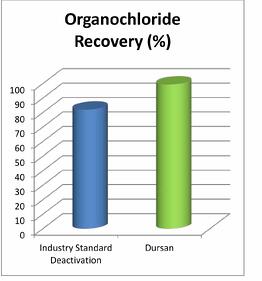|

|
Dursan bio-inert coating reduces carryover and false readings while improving instrument durability.
|
Existing techniques for enhancing bio-inertness & protein release such as polyethylene glycol (PEG) systems lack stability and will oxidize in the presence of oxygen, rendering them useless. Others like thermoplastics fail at 250° C and risk incompatibility. SilcoTek provides an alternative solution in Dursan that offers better surface stability in air and other oxidative environments, even under elevated (450° C+) temperatures.

Dursan is a low surface energy, bio-inert coating designed to reduce nonspecific protein binding and carryover while improving corrosion resistance on biotechnology and HPLC components.
Hydrochloric acid immersion of Dursan coated 316SS compared to super duplex demonstrates the improved corrosion resistance of Dursan coated products. The super duplex beaker shows significant contamination while the Dursan shows minimal contamination.
Medical device manufacturers and diagnostic equipment used for protein analysis will benefit from the durability and unmatched chemical inertness of Dursan®-coated steel and glass.

Use Dursan® coating on a wide range of biotechnology equipment:
- HPLC columns and hardware
- Medical diagnostic equipment
- Biomedical devices
- Needles
Give Dursan a try; get a free test coupon and see how Dursan bio-inert coating can improve recovery, and system durability.







